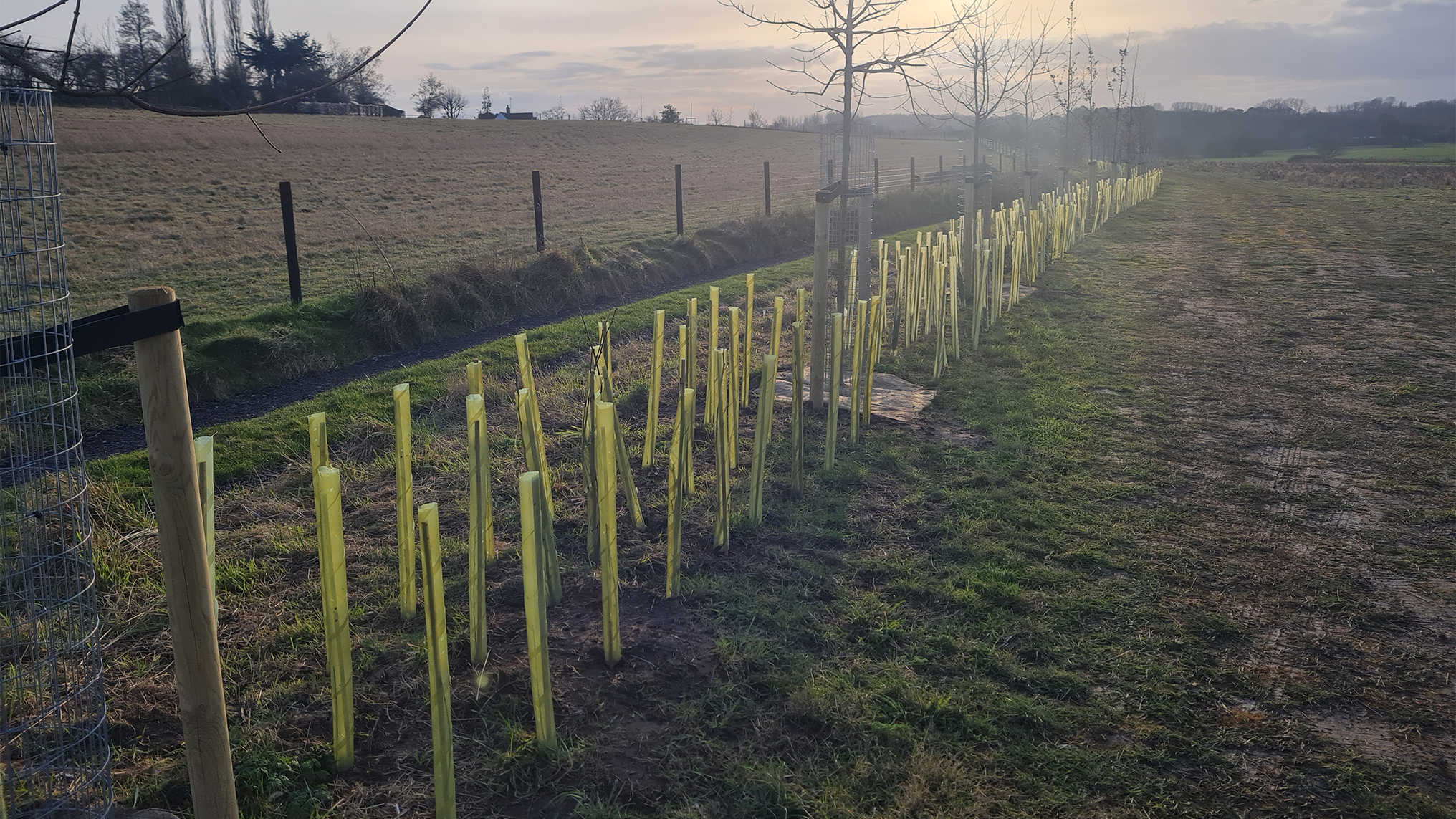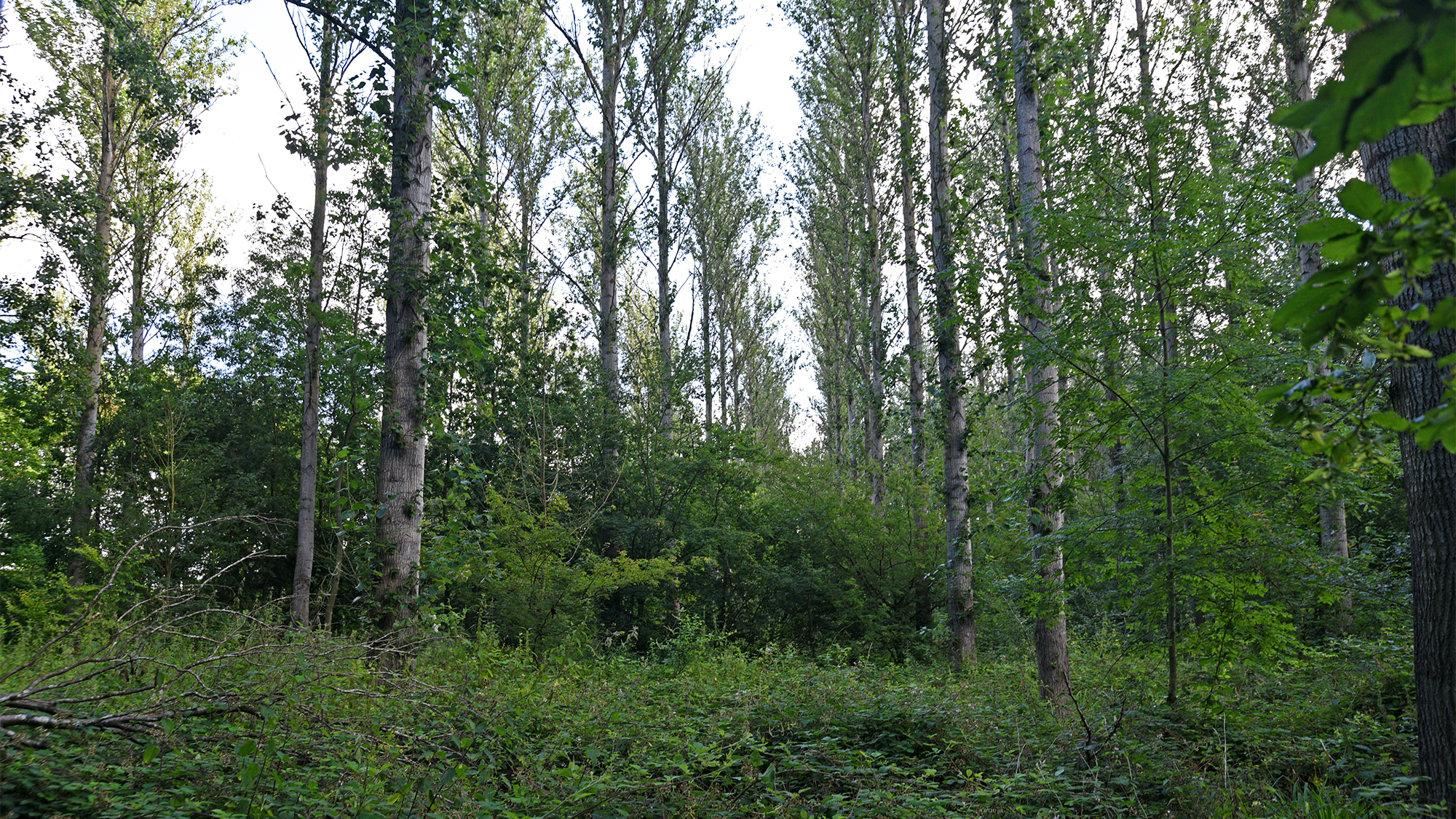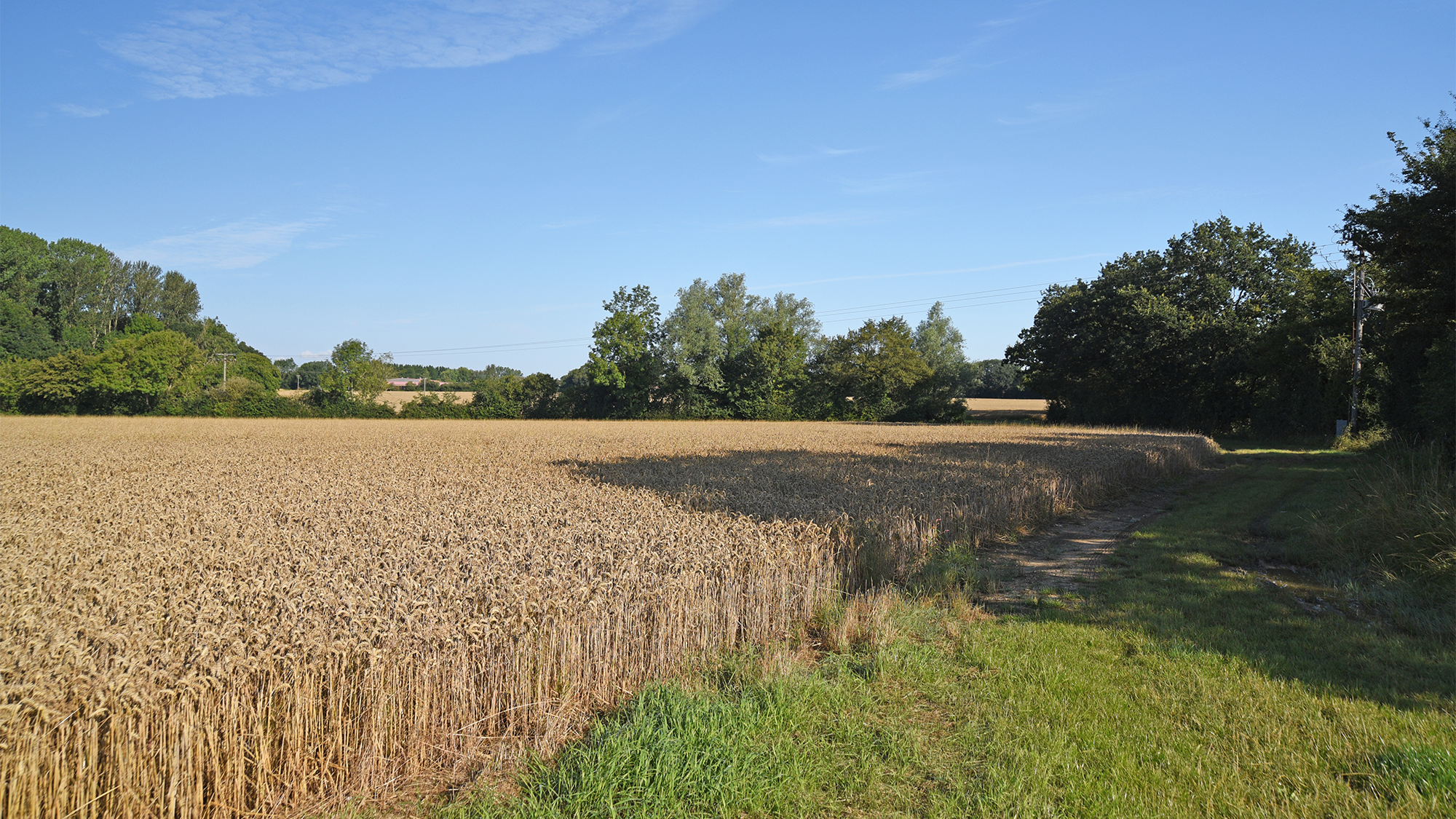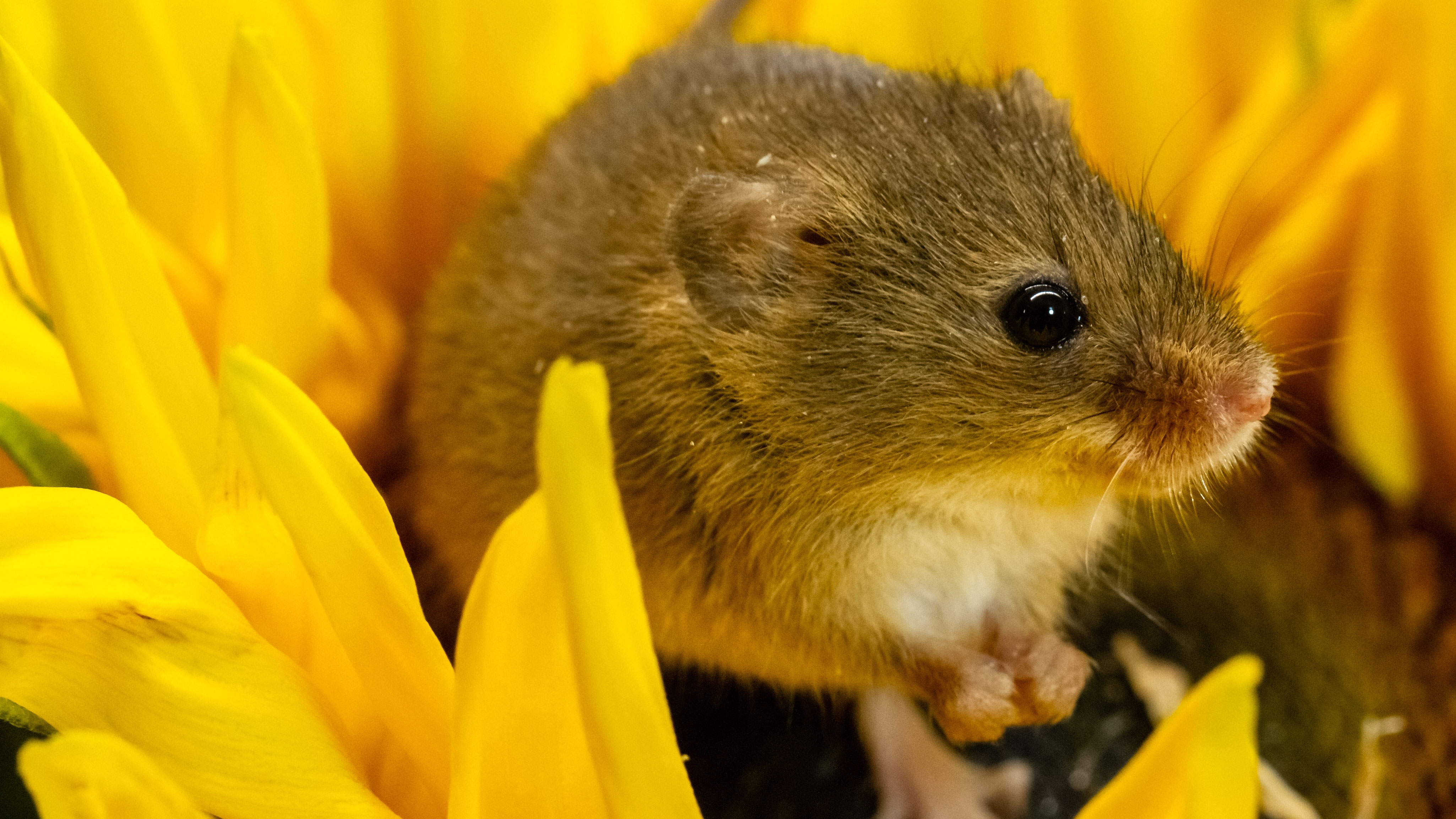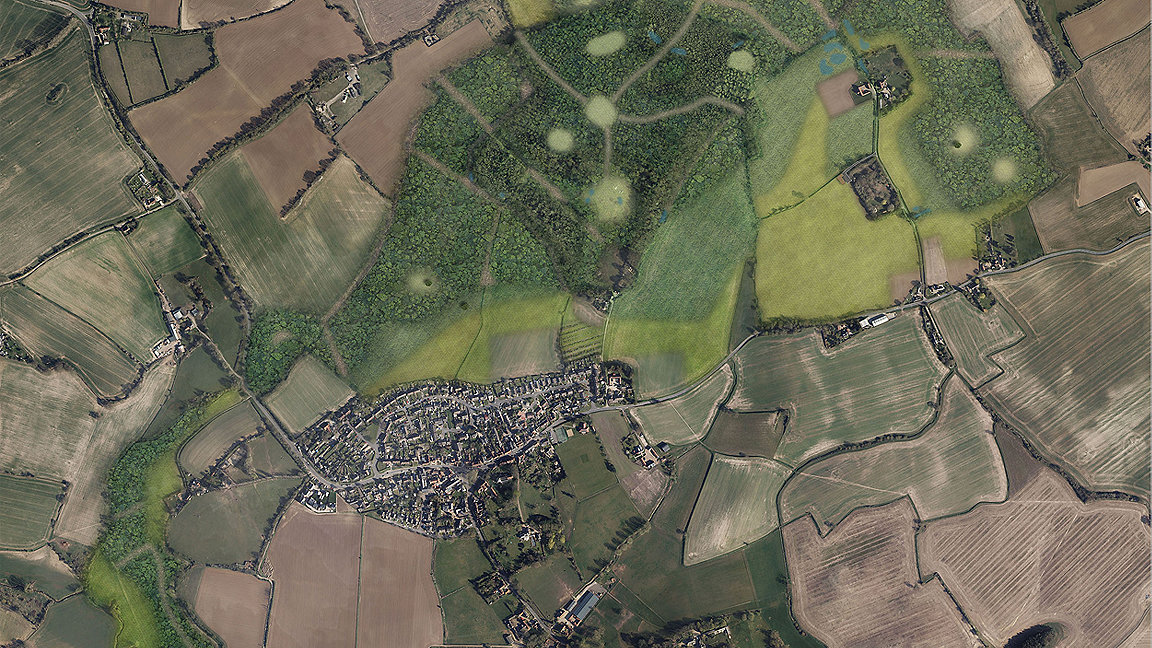
In 2021, the grounds maintenance firm Ground Control bought 120ha of degraded farmland in north Essex to develop the Wildfell Centre for Environmental Recovery.
The company planned to use the land to boost biodiversity, increase habitat diversity, and improve the nature recovery network, using new land management practices that it could showcase to landowners and clients.
Project Wildfell aims to 'transform the arable farm into a flourishing area of nature', while acting as a live laboratory. It showcases tangible methods of biodiversity net gain (BNG) and carbon sequestration, and tests the design, delivery, and management of nature based-solutions. In addition, the intention is for the project to be an educational facility for clients and partners.
Its aims are to:
- convert arable land into woodland, in conjunction with other habitat creation projects focusing on achieving biodiversity net gain (BNG)
- bring existing woodland back into management
- restore an area of ancient semi-natural woodland that was planted with poplar in the 1950s.
New woodland links monitored habitats
The first avenue of 26 native young field maple trees was planted in November 2021. Each is dedicated to a UK environmental hero who has taken pioneering action to tackle climate change and reverse nature's decline.
In February 2022, 5,000 native trees and shrubs were planted along the same avenue, extending it and creating a linear, biodiverse habitat. The planting will form a nature corridor linking different parts of the site so wildlife can move easily between them.
Wildfell will be set up as a carbon observatory, inspired by the Deep Carbon Observatory. Plots of established woodland and hedgerows were initially laser-scanned to detect biomass and carbon stocks on site. Light detection and ranging (LiDAR) and optical data have also been collected using drone technology. This will be processed to give detailed models of above-ground biomass and carbon stocks on site, which will be monitored over time to assess the positive impact of the project.
Drag the slider across the image to see the before and after versions of Project Wildfell
Measuring BNG and species populations
Ground Control's ecologists are collecting baseline data for the site so they can measure and report on any improvements. The data will be used to develop a habitat bank to generate income from the BNG calculated using DEFRA 4.0 metric.
As well as soil and water quality sampling, dedicated species surveys carried out over eight months will provide additional baseline data. Surveys have already been carried out for great crested newts, breeding birds, reptiles, and mammals covered by the UK Biodiversity Action Plan such as the water vole, greater and lesser horseshoe bats, and the red squirrel.
The reptile data gathered over time will indicate which populations are on site, where their home ranges are and whether they are breeding. This will inform restoration measures such as hibernacula provision and improving the habitats to protect the species.
The surveys identified 47 species that are currently using the site, including:
- red kite
- nesting species of raven, mallard, moorhen and starling
- otter
- hare
- rabbit
- fox
- grey squirrel
- deer.
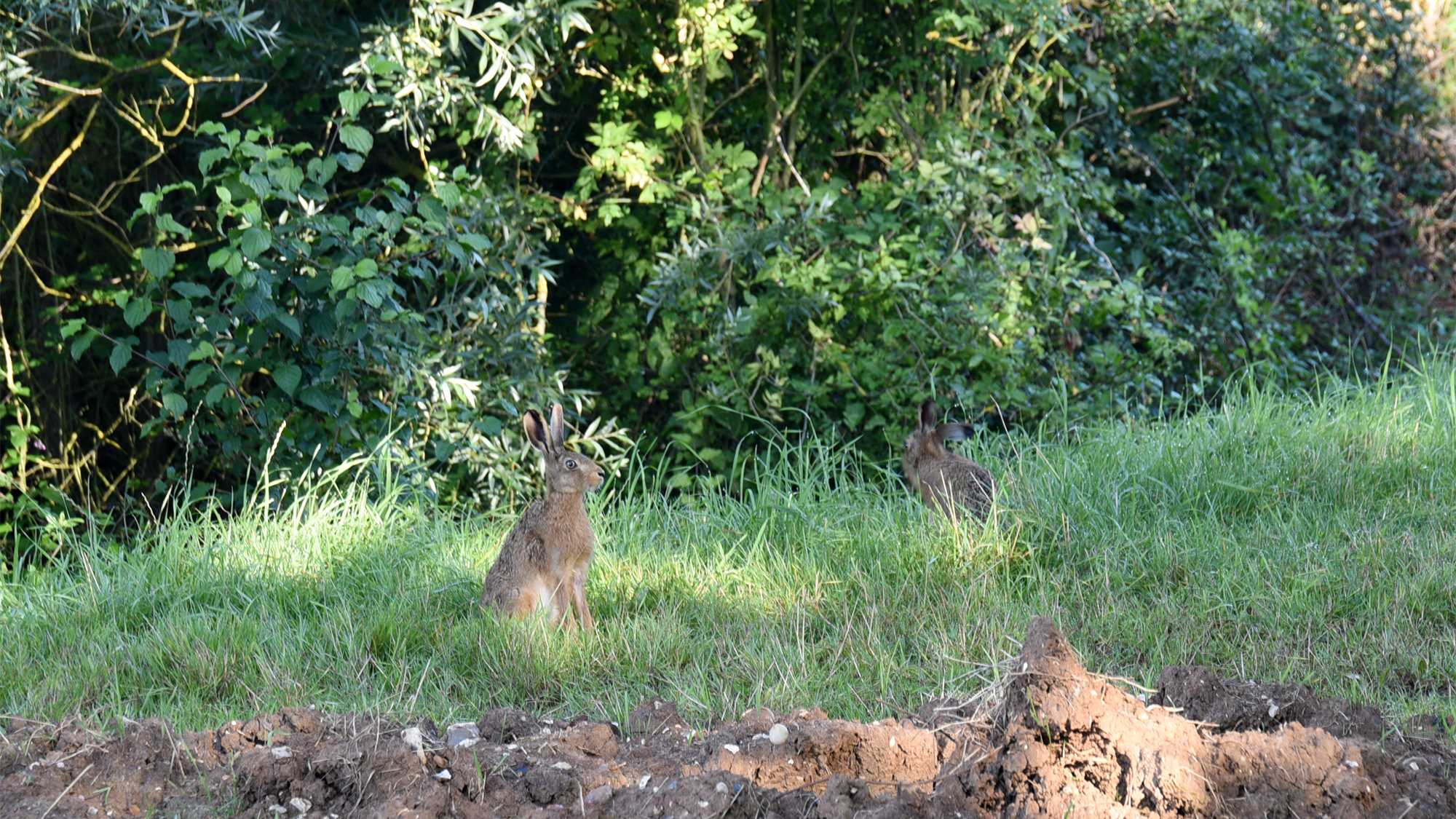
Hares discovered on site, 2022. © Ground Control
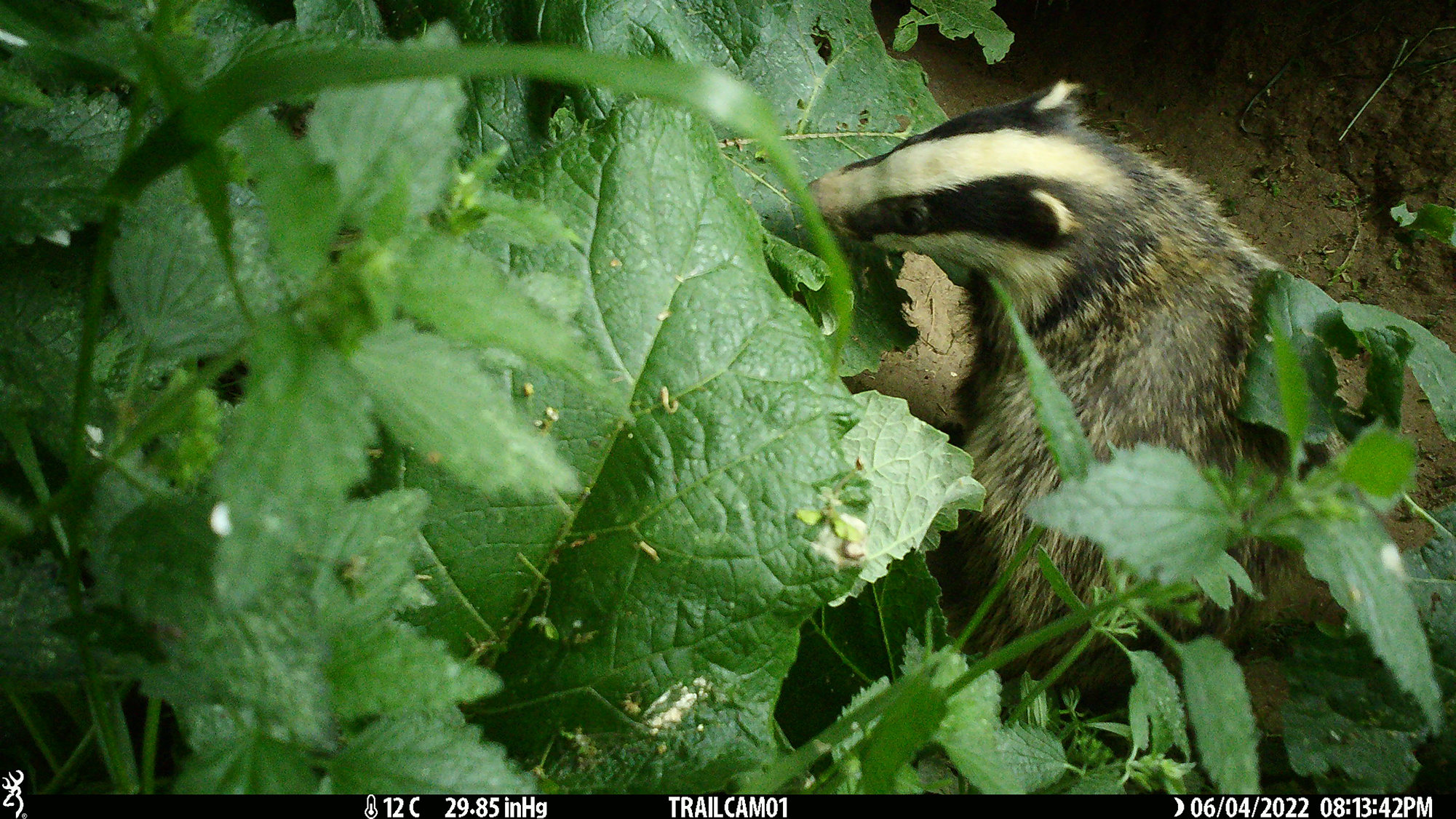
Badger discovered during on-site surveys, 2022. © Ground Control
Project Wildfell milestones 2021
- April: 120ha farmland purchased for £2m.
- May: habitat surveys begin.
- June: woodland designs and funding applications begin.
- July: habitat surveys completed.
- August: Project Wildfell launched.
- November: first trees planted at Wildfell, to mark COP26.
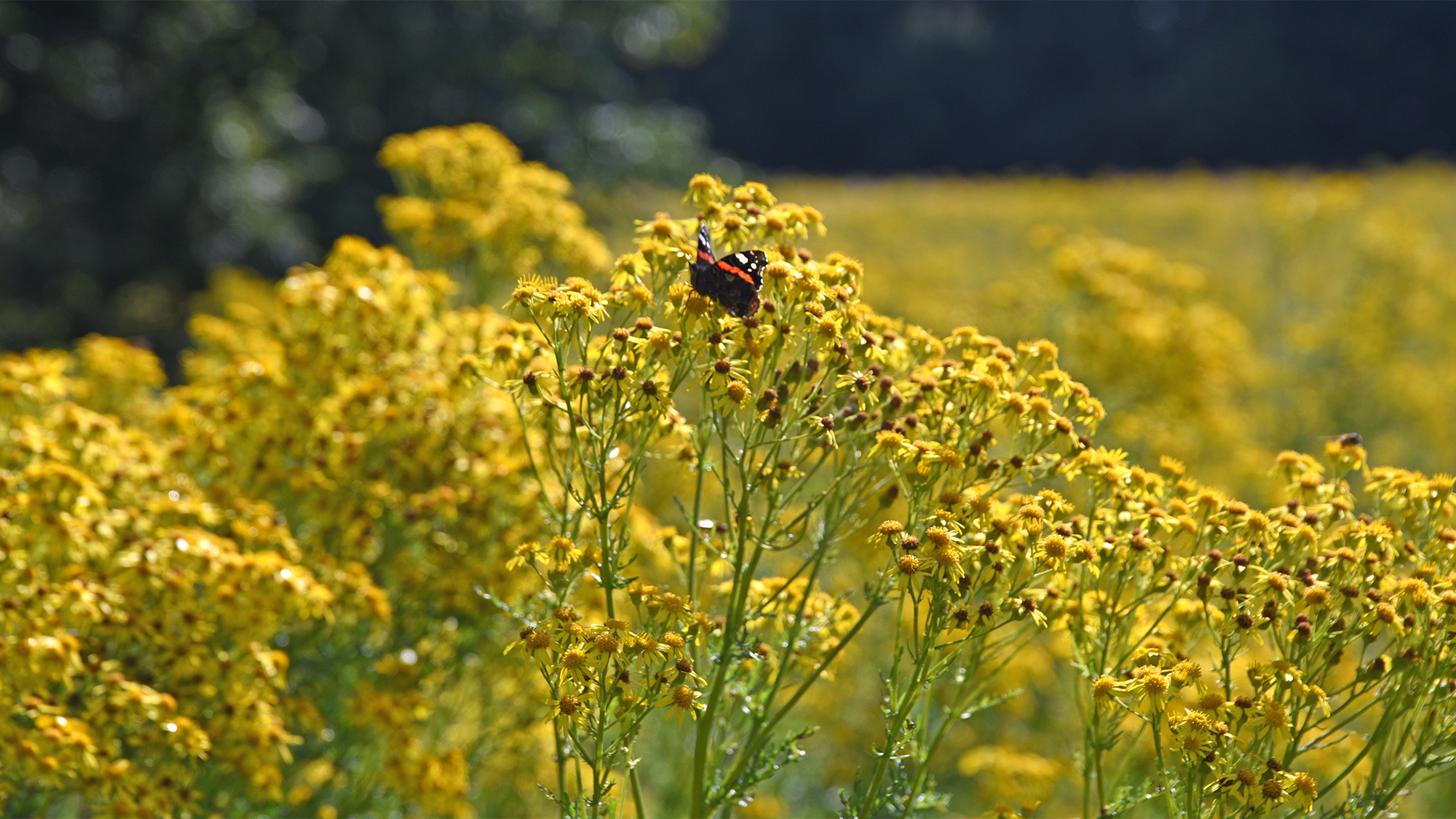
Project Wildfell milestones 2022
- February: volunteer hedgerow planting partnership established.
- March: protected species survey carried out.
- April: first bird box installed.
- May: first otters and great crested newts sighted.
- July: first badgers sighted.
- August: BNG design and pollinator pathway plan completed, showing how land will be managed to attract bees, butterflies, and other pollinators.
- September: first weasel sighted.
- October: pond creation and restoration works begin; first bats sighted.
- November: woodland creation begins for 2022–23 tree planting season.
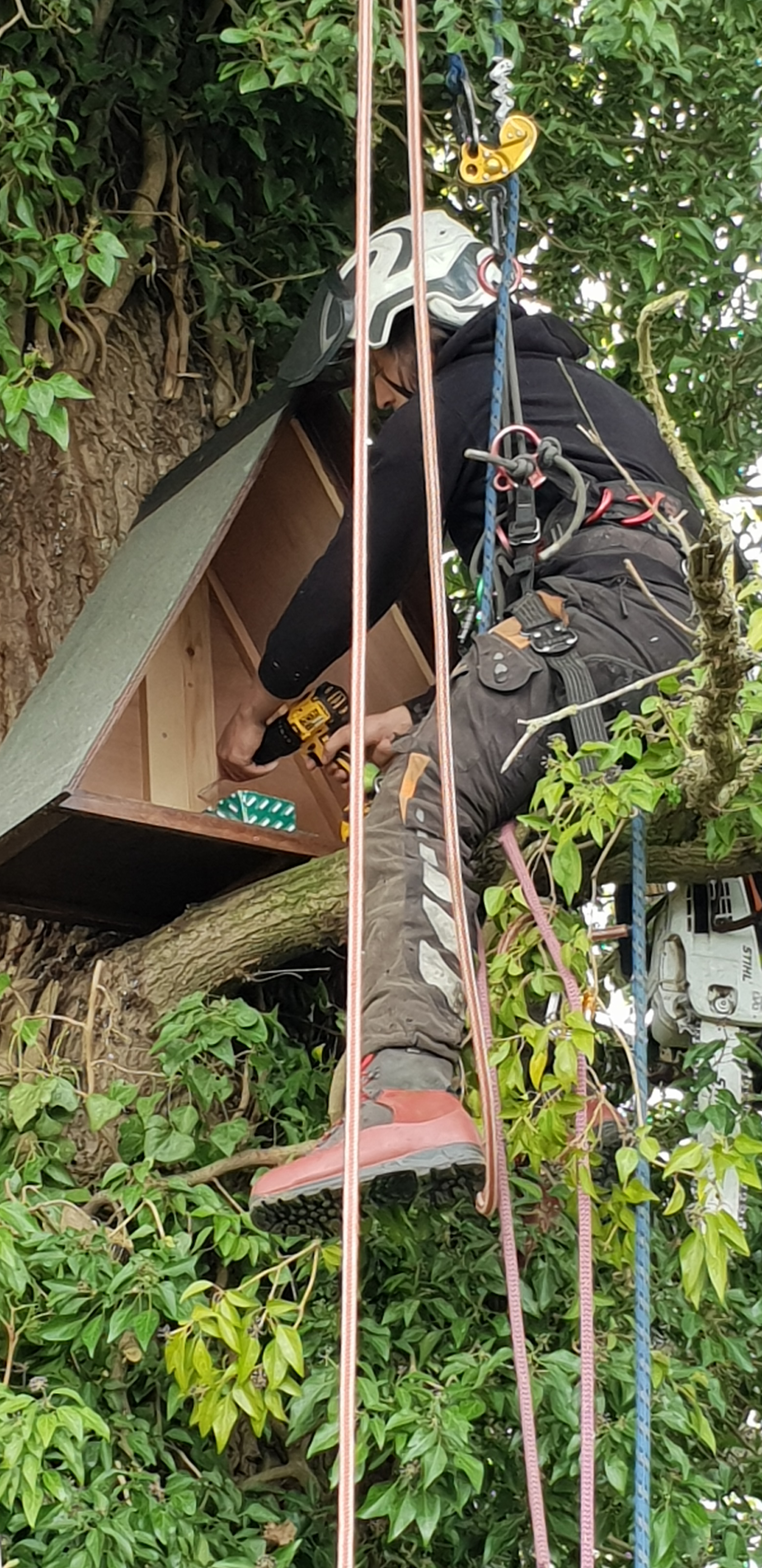
Installing the first bird box, Project Wildfell. © Ground Control
Partners provide expertise and finance
To maximise BNG, Ground Control used information from the biodiversity metric to create proposals for habitat management plans that would provide biodiversity units. There is now an opportunity to sell these units to companies who need to deliver off-site BNG. It carried out a drone survey, as well as taking aerial photographs and video footage of the site, flying a path that could be flown again at regular intervals to monitor progress over time.
Project Wildfell is collaborating with wild plant conservation charity Plantlife, the Royal Botanic Gardens Kew and the Bumblebee Conversation Trust to conduct surveys and research. This expert input will inform the project's habitat creation and management proposals for plants, fungi and pollinators. As part of this work, five bee boxes have been set up on site to monitor solitary bees.
Ground Control bought Grays Farm for £2m using its investment from the Evergreen Fund which is a separate venture with its own investors and partners This £5m impact venture fund dedicates 5% of Ground Control's annual net profits to environmental initiatives and carbon sequestration.
The fund provides seed and growth capital to companies and social enterprises that focus on achieving measurable, beneficial and sustainable environmental outcomes. As part of the fund, Ground Control invests patient capital into commercially viable projects, reinvesting future profits in new sustainable ventures.
The Environment Agency will then fund tree planting, which will also support ground modelling in the River Pant corridor and wider catchment to enhance our habitat creation. Meanwhile, Natural England and the Farming and Wildlife Advisory Group for the East of England will fund five new ponds, and engineering service providers Briggs Equipment has pledged funding for a further 3,000 trees based on its actual sales in the first two quarters of 2022.
Samantha Fry is digital and campaigns manager at Ground Control
Contact Samantha: Email
Related competencies include: Environmental management, Land use and diversification Management of the natural environment and landscape, Measurement, Sustainability

